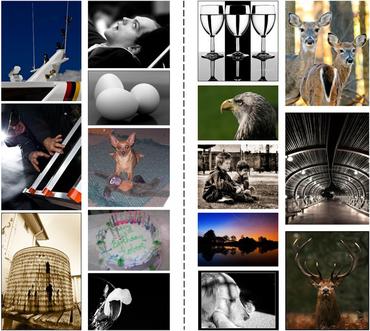Aesthetics Quality Assessment
10 papers with code • 4 benchmarks • 6 datasets
Automatic assessment of aesthetic-related subjective ratings.
Most implemented papers
NIMA: Neural Image Assessment
Automatically learned quality assessment for images has recently become a hot topic due to its usefulness in a wide variety of applications such as evaluating image capture pipelines, storage techniques and sharing media.
Photo Aesthetics Ranking Network with Attributes and Content Adaptation
In this work, we propose to learn a deep convolutional neural network to rank photo aesthetics in which the relative ranking of photo aesthetics are directly modeled in the loss function.
Attention-based Multi-Patch Aggregation for Image Aesthetic Assessment
Aggregation structures with explicit information, such as image attributes and scene semantics, are effective and popular for intelligent systems for assessing aesthetics of visual data.
Effective Aesthetics Prediction with Multi-level Spatially Pooled Features
We propose an effective deep learning approach to aesthetics quality assessment that relies on a new type of pre-trained features, and apply it to the AVA data set, the currently largest aesthetics database.
Personalized Image Aesthetics Assessment via Meta-Learning With Bilevel Gradient Optimization
Typical image aesthetics assessment (IAA) is modeled for the generic aesthetics perceived by an ``average'' user.
Learning Probabilistic Ordinal Embeddings for Uncertainty-Aware Regression
An ordinal distribution constraint is proposed to exploit the ordinal nature of regression.
Image Composition Assessment with Saliency-augmented Multi-pattern Pooling
Image composition assessment is crucial in aesthetic assessment, which aims to assess the overall composition quality of a given image.
OrdinalCLIP: Learning Rank Prompts for Language-Guided Ordinal Regression
In this paper, we propose to learn the rank concepts from the rich semantic CLIP latent space.
Understanding Aesthetics with Language: A Photo Critique Dataset for Aesthetic Assessment
In this regard, we propose the Reddit Photo Critique Dataset (RPCD), which contains tuples of image and photo critiques.
Q-Align: Teaching LMMs for Visual Scoring via Discrete Text-Defined Levels
The explosion of visual content available online underscores the requirement for an accurate machine assessor to robustly evaluate scores across diverse types of visual contents.





 AVA
AVA
 AADB
AADB
 Aesthetic Visual Analysis
Aesthetic Visual Analysis
 Image Aesthetics dataset
Image Aesthetics dataset
 RPCD
RPCD
